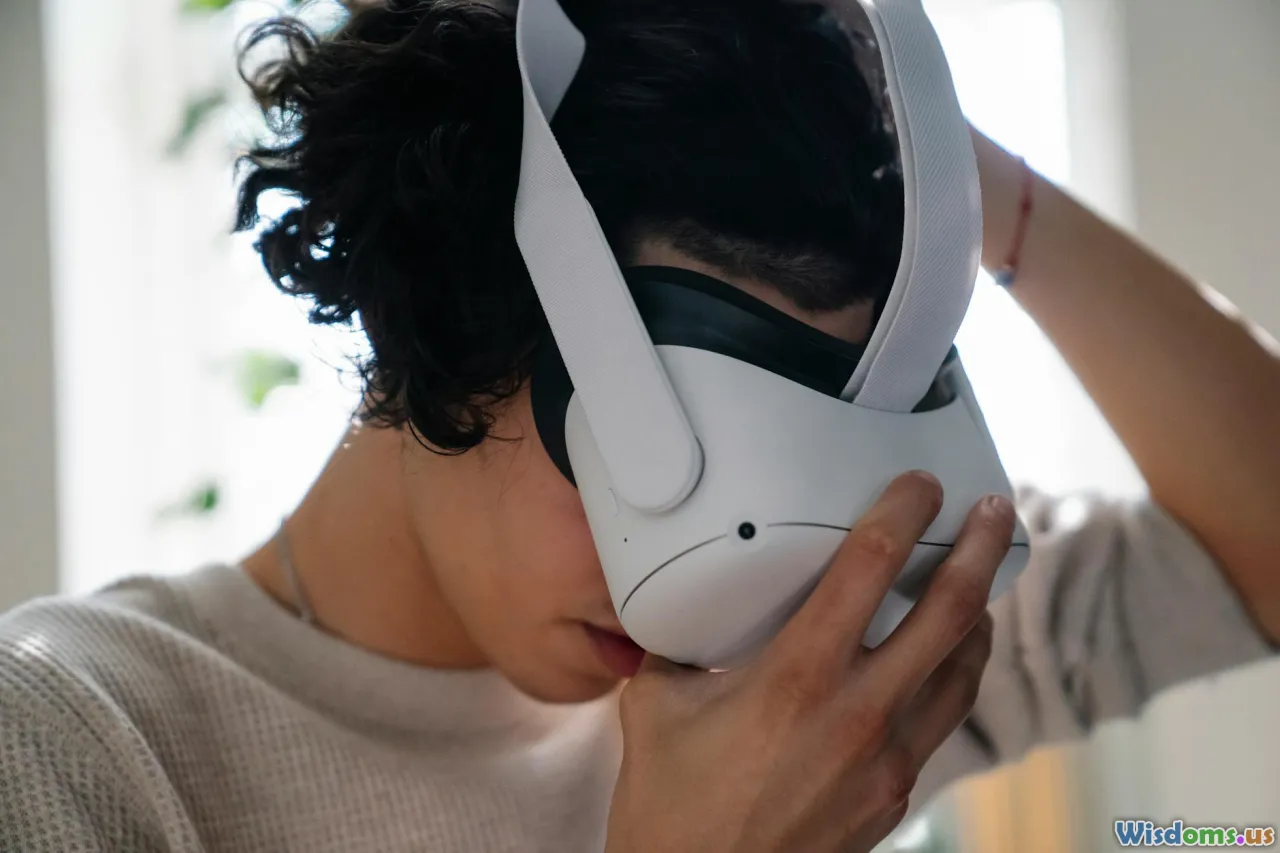
Virtual Reality Movies Hype or The Next Big Thing in Entertainment
9 min read Explore whether virtual reality movies are just hype or truly revolutionizing entertainment with immersive storytelling and technology. (0 Reviews)
Virtual Reality Movies: Hype or the Next Big Thing in Entertainment?
Imagine stepping inside your favorite film—not just watching it unfold but experiencing it from within. Virtual Reality (VR) movies promise this mind-bending immersion, blurring the boundaries between audience and story. But are VR movies a fleeting hype, or do they herald a seismic shift in entertainment? This article explores the phenomenon of VR cinema, examining its potential, challenges, and whether it's truly the next big thing.
The Rise of Immersive Storytelling: What Are VR Movies?
Virtual Reality movies leverage head-mounted displays and interactive environments to create a fully immersive cinematic experience. Unlike traditional films where viewers passively watch a framed story, VR films place audiences inside 360-degree worlds, allowing them to look around, sometimes interact with elements, and feel a profound presence within the narrative setting.
How VR Movies Work
Typically using VR headsets like Oculus Quest, HTC Vive, or PlayStation VR, viewers are transported into three-dimensional spaces rendering the story environment. Filmmakers use 360-degree cameras or computer-generated imagery (CGI) to craft these experiences. Unlike conventional editing techniques, VR films require innovative approaches to storytelling since camera cuts can be disorienting or impossible without breaking immersion.
Historical Context: From Sci-Fi Dream to Emerging Reality
Virtual reality technology has been evolving since the 1960s, but it has only recently begun influencing cinema significantly. Early VR films were more experimental art pieces or tech demos. For instance:
- Dear Angelica (2017) by Oculus Story Studio was one of the pioneering VR narratives praised for its painted, dreamlike visuals.
- The Invisible Man VR Experience (2020) offered thriller fans a taste of participatory suspense.
These projects, while limited in length and budget, hinted at the vast possibilities for VR storytelling.
Advantages of VR Movies: What Sets Them Apart?
Unparalleled Immersion and Presence
Discussions about VR’s potential frequently cite 'presence'—the sensation of truly being in another place. This engagement can heighten emotional impact, making horror scenes terrifying or dramatic moments profoundly moving.
A study by Stanford University in 2019 found that VR participants exhibited stronger emotional responses compared to traditional film viewers, suggesting heightened empathy and memory retention.
Interactive Storytelling
Some VR films incorporate branching narratives where the viewer’s choices influence the plot, like an interactive game. This non-linear approach offers personalized experiences, enhancing replay value and engagement.
New Artistic Medium
VR inspires filmmakers to rethink spatial storytelling and explore perspectives impossible in flat screens. For example, experiments like Gloomy Eyes (2019) combine animation and VR to immerse viewers into fantasy worlds where they can explore details and background stories organically.
Challenges Slowing VR Movie Adoption
High Cost and Accessibility
Quality VR experiences demand expensive headsets and powerful computing, limiting mass adoption. For casual viewers, purchasing dedicated hardware poses a barrier bigger than buying movie tickets.
Technical Limitations and Comfort
Motion sickness and discomfort from extended VR sessions remain issues. Furthermore, creating convincing VR narratives requires balancing freedom of viewer movement with coherent storytelling—a demanding craft that's still evolving.
Content Scarcity and Standards
Unlike traditional film, VR hasn't yet established widespread industry standards for formats or production workflows. This nascent state means the quantity and variety of high-quality VR films are limited.
Industry Insights: What Experts Say
John Gaeta, a pioneer of virtual reality in cinema and a Visual Effects Supervisor on The Matrix, stated recently: "VR isn’t just about filming a movie differently; it’s about crafting experiences where viewers become active participants, not passive observers. That changes the entire language of storytelling."
On the commercial front, tech giants like Facebook (Meta) and Sony investing heavily in VR hardware and studios signal confidence in its entertainment potential.
Real-World Examples: VR Integration in Entertainment
1. Dreamscape Immersive
Dreamscape creates VR experiences that combine cinematic storytelling with motion capture, allowing participants to move physically within the story space. Their title Alien Zoo offers an adventure with fantastical creatures, praised for its cinematic quality combined with immersion.
2. Disney’s Venture Into VR
Disney Research has been exploring VR narratives to complement traditional films. Their VR lounges in parks offer visitors immersive scenes tied to popular franchises like Star Wars and Marvel, blending theme park entertainment with VR tech.
3. Film Festivals and VR Categories
Events like Sundance Film Festival and Tribeca have dedicated VR sections, showcasing innovative VR cinema and validating the genre’s creative legitimacy.
The Viewer’s Perspective: Changing Consumption Habits
Younger audiences, especially digital natives, often express openness to novel formats. Studies show that Millennials and Gen Z seek interactive, immersive content; VR movies could meet that demand better than classic formats.
However, some traditional moviegoers remain hesitant, valuing narrative depth and cinematic artistry over technological novelty.
Will VR Movies Replace Traditional Cinema?
Currently, VR films tend to be shorter experiences, often 10-30 minutes, whatever due to content constraints and user comfort. Mainstream blockbuster films continue to dominate. VR is unlikely to eliminate traditional movies soon but may coexist, appealing as a complementary medium.
Indeed, VR cinema may carve out a niche akin to how streaming changed television — an innovative platform offering unique experiences rather than outright replacing established forms.
Looking Ahead: The Future of VR in Entertainment
Enhancements in VR hardware portability, affordability, and haptic feedback could expand cinematic possibilities dramatically, making home or theatrical VR movies commonplace.
Augmented Reality (AR) and Mixed Reality (MR) might integrate with VR storytelling, enabling hybrid experiences that combine real-world interaction with cinematic immersion.
Collaboration tools like VR theaters where audiences experience movies simultaneously in virtual spaces may revolutionize social viewing experiences.
Conclusion: Hype or the Next Big Thing?
Virtual reality movies embody immense promise: an unprecedented level of immersion, interactivity, and storytelling innovation that traditional formats cannot match. While they currently face notable hurdles — from technology costs to creative challenges — the accelerating pace of development and industry investment suggest VR cinema isn’t just hype.
Rather, it represents a nascent but rapidly growing frontier in entertainment. Whether VR films become the dominant form or complement existing media, they undoubtedly offer a glimpse into the future of how we will experience stories—more vividly, more personally, and more memorably than ever before.
For viewers, filmmakers, and investors alike, the VR movie phenomenon is a thrilling space to watch, ready to transform the art and business of entertainment in the decade ahead.
Are you ready to put on a headset and step inside the story? The next blockbuster could be not on a screen, but all around you.
Rate the Post
User Reviews
Popular Posts





















